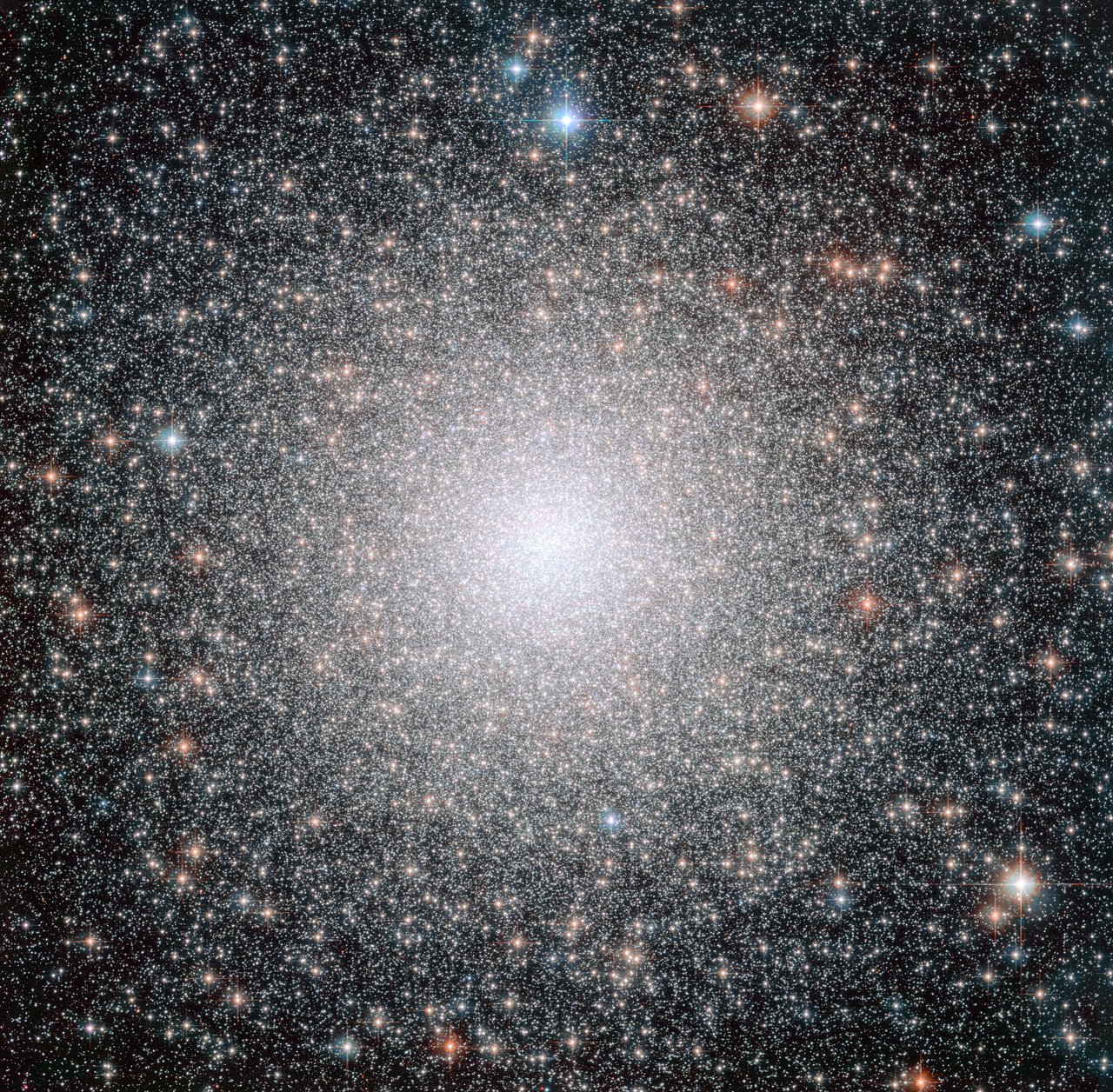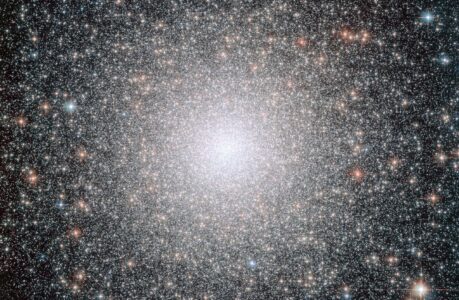Unlock the Mysteries of the Cosmos and Learn How to Observe Globular Clusters
Gaze up at the night sky, and you’ll be met with a mesmerizing display of stars, planets, and celestial wonders. Among these captivating objects, globular clusters stand out as cosmic jewels, a stellar treasure trove suspended in the vastness of space. In this exploration, we delve into the intriguing world of globular clusters, uncovering their mysteries, formation, and how you can view them with your own eyes.
What Are Globular Clusters?
Defining the Cosmic Gems
Globular clusters are compact and densely populated groups of stars, bound together by gravity within a spherical region of space. These clusters are fascinating celestial objects that offer astronomers a wealth of knowledge about the universe’s history and composition.
A Stellar Census
Inside a typical globular cluster, you’ll find thousands to millions of stars tightly packed together. These stars come in various sizes and colors, creating a stunning visual spectacle when observed through a telescope. The sheer concentration of stars within a globular cluster makes it a stark contrast to the sparse distribution of stars in the surrounding galactic halo.
Ancient Relics
One of the most captivating aspects of globular clusters is their age. These cosmic conglomerations are some of the oldest objects in the universe, dating back to nearly the dawn of time. Most globular clusters are estimated to be around 10 to 13 billion years old, predating the formation of many galaxies.
How Do Globular Clusters Form?
The Stellar Ballet
The formation of globular clusters is a complex cosmic dance involving gravity, stellar evolution, and galactic dynamics. While the exact mechanisms are still under investigation, astronomers have developed several theories about their origins.
Galactic Orphans
One prominent theory suggests that globular clusters are remnants of small, ancient galaxies that were absorbed by larger galaxies like our Milky Way. When these smaller galaxies merged with their larger counterparts, their stars and star clusters were incorporated into the galactic halo, forming globular clusters.
Self-Collapse
Another theory proposes that globular clusters formed independently within the galactic halo. This theory suggests that a dense region of gas and dust began collapsing under the influence of gravity. As the gas and dust collapsed, it fragmented into smaller clumps, each of which eventually became a globular cluster.
The Intriguing Characteristics of Globular Clusters
Stellar Population
Globular clusters provide a unique laboratory for studying the evolution of stars. Since they contain stars of varying ages, astronomers can analyze their spectral properties to gain insights into the different stages of stellar evolution. This diversity in stellar population makes globular clusters invaluable for understanding the life cycles of stars.
Cosmic Archeology
By examining the chemical composition of stars within globular clusters, astronomers can uncover clues about the early universe’s conditions. The low metallicity of these stars, meaning they contain fewer heavy elements than stars in the Milky Way’s disk, indicates that they formed during a time when the universe was young and metal-poor.
Stellar Dynamics
The dense environment of a globular cluster results in complex gravitational interactions among stars. This can lead to fascinating phenomena such as binary star systems, stellar collisions, and even the occasional escape of stars from the cluster due to gravitational interactions.
Where to Find Globular Clusters
The Galactic Halo
Globular clusters are predominantly found in the outer regions of galaxies, known as the galactic halo. In our Milky Way, they orbit the central galactic bulge at various distances, creating a halo of ancient stars that encircles our spiral galaxy.
Constellations of Beauty
To observe globular clusters, you don’t need a powerful telescope, although it certainly helps. Many of these stellar wonders can be spotted with the naked eye, given the right conditions and a dark sky. Here are a few notable examples and tips on how to locate them:
1. Messier 13 (M13) – Hercules Cluster
- Location: Hercules constellation
- How to Find: Look for Hercules in the summer sky, and you’ll notice a faint smudge in the constellation’s center. This smudge is M13, a stunning globular cluster that can be seen with binoculars or a small telescope.
2. Messier 22 (M22) – Sagittarius Cluster
- Location: Sagittarius constellation
- How to Find: Spotting M22 is a breeze during the summer months. Look toward the heart of the Milky Way in Sagittarius, and you’ll see this globular cluster shining brightly, even to the naked eye.
3. Messier 3 (M3) – Canes Venatici Cluster
- Location: Canes Venatici constellation
- How to Find: Head north to the Canes Venatici constellation in the spring, and you’ll discover M3. It’s a splendid globular cluster that is best viewed through binoculars or a telescope.
4. 47 Tucanae – The Jewel of the Southern Sky
- Location: Tucana constellation (Southern Hemisphere)
- How to Find: If you’re stargazing from the Southern Hemisphere, don’t miss 47 Tucanae. It’s a dazzling globular cluster visible without any optical aids and is often described as a “miniature Milky Way.”
Observing Globular Clusters
Essential Equipment
To embark on your journey of observing globular clusters, you’ll need some basic equipment:
- Telescope: While some globular clusters are visible with the naked eye or binoculars, a telescope will provide a more detailed and awe-inspiring view.
- Star Charts and Apps: Invest in star charts or download stargazing apps to help you locate globular clusters in the night sky.
- Dark Sky Location: Light pollution can obscure your view of celestial objects, so choose a dark sky location away from city lights.
Observing Techniques
Once you’re prepared with the right equipment and location, follow these techniques for an optimal globular cluster observation experience:
1. Allow Your Eyes to Adjust: Spend at least 15-20 minutes in darkness to let your eyes adapt to low light conditions. This will help you see fainter stars within the globular cluster.
2. Use Low Magnification: Start with low magnification eyepieces in your telescope to get a wider field of view, making it easier to locate the cluster.
3. Focus on Individual Stars: Take your time to observe individual stars within the cluster. Notice their colors, brightness, and positions.
4. Sketch or Photograph: If you’re artistically inclined or interested in astrophotography, consider sketching or photographing the globular cluster to capture its beauty.
The Scientific Significance of Observing Globular Clusters
Stellar Evolution
Observing globular clusters can provide invaluable insights into the different stages of stellar evolution. By studying the various types of stars within a cluster, astronomers can piece together the story of how stars are born, evolve, and eventually meet their end.
Galactic History
Globular clusters are like ancient time capsules, preserving the conditions of the early universe. Analyzing the chemical composition of stars within these clusters helps astronomers understand the early processes that shaped galaxies like the Milky Way.
Gravitational Dynamics
The gravitational interactions between stars within globular clusters lead to fascinating phenomena, including the formation of binary star systems and the ejection of stars from the cluster. These interactions offer valuable data for studying the dynamics of stellar systems.
Chapter 7: Challenges and Tips for Observing Globular Clusters
Light Pollution
One of the most significant challenges in observing globular clusters is light pollution. Urban and suburban areas are often flooded with artificial light, making it difficult to see faint celestial objects. To overcome this, travel to a dark sky site away from city lights.
Weather Conditions
Clear skies are essential for stargazing. Keep an eye on weather forecasts and plan your observation nights during periods of good weather. Even a small amount of cloud cover can obscure your view of globular clusters.
Telescope Maintenance
Ensure your telescope is in good working condition. Regularly clean and align the optics to optimize your viewing experience. A well-maintained telescope will provide clearer and more detailed views of globular clusters.
Patience and Practice
Observing celestial objects can be challenging, especially for beginners. Be patient, and don’t get discouraged if you don’t see everything on your first attempt. Practice and experience will improve your skills over time.
Chapter 8: The Beauty of Cosmic Clusters
Globular clusters are not just scientific wonders; they also offer a breathtaking visual spectacle. Each cluster is a celestial masterpiece, composed of thousands of stars that have journeyed through billions of years of cosmic history. As you gaze upon these clusters, you’re not just observing distant points of light; you’re connecting with the universe’s past and unraveling its secrets.
In the realm of amateur astronomy, globular clusters are a beloved subject. Their accessibility to backyard astronomers, combined with their stunning beauty, makes them a favorite target for telescopic exploration. Whether you’re a seasoned stargazer or someone just beginning to explore the wonders of the night sky, globular clusters offer a captivating journey into the cosmos.
Chapter 9: Conclusion
In this exploration of globular clusters, we’ve uncovered their mysterious origins, their significance in the study of the universe, and how you can embark on your own journey to observe these cosmic gems. From the ancient stars within their dense cores to the secrets they hold about the cosmos’s past, globular clusters continue to captivate and inspire astronomers and stargazers alike.
So, the next time you find yourself beneath a dark, star-studded sky, take a moment to search for the faint glimmer of a globular cluster. As you peer into the depths of space and time, you’ll be joining a long line of explorers who have marveled at the wonders of the universe, one celestial jewel at a time. Happy stargazing!
Now, get your telescope ready and embark on a journey to discover the wonders of globular clusters in the night sky. Explore their ancient beauty and unravel the mysteries of the cosmos as you gaze upon these stellar marvels.
Remember, the universe is waiting to be explored, and globular clusters are just one of its many wonders.
Keep looking up, and you’ll continue to uncover the secrets of the cosmos.

